Building an online store offers a fantastic opportunity to connect with more people. As a business owner, you only need the most basic tools to start a business online.
What is required are the right tools and proper research on what type of store you want to build, the platforms that can offer such a service, and the strategies for reaching local and global audiences.
This article is for people interested in building a smart gadget store, we’ll go over what is required and the steps you can follow to achieve your goal.
But first, what is a Smart Gadget store?
What does a Smart Gadget Store Entail?
A smart gadget store sells smart or innovative technological devices, ranging from smartphones to entertainment devices like VR sets and more.
Here is a list of smart devices or products that a smart gadget store may cater to;
Home devices: Smart lighting, smart fridges, security cameras
Wearable devices: Smart watches, smart fitness watches, health monitoring devices, and sleep trackers.
Mobile devices: Smartphones, wireless speakers, laptops, wireless headphones, tablets.
Entertainment devices: Smart TVs, gaming consoles, VR headsets.
Productivity devices: Voice assistants, ergonomic chairs, etc.
Personal care devices: Smart hairbrushes, toothbrushes, etc.
Every business requires several key components before it Is launched so that entrepreneurs understand the market they are venturing into; what it means and what is needed to run and thrive in that business.
Here are a few key factors to consider before launching a smart gadget store;
Market Research
Market research involves collecting crucial information about a business's target market and audience. This helps business owners understand customers' desires and needs, identify competitors in the market, and so on. Market research can take many forms including; one-to-one interviews, focus groups, research centers, competitor market research, surveys and more.
Key Research Points
- It's important to decide what type of Gadgets you want to focus on
- Identify your competitors and what areas they are lacking
- Define your customers or target audience
Business Plan
A business plan is a document that contains and outlines the goal of a business, the strategies, and the timeline to achieve these goals. It contains details of market analysis, the products you intend to sell, and the plan of action that will help you reach, and retain customers including the startup cost, operating expenses, and revenue.
Sourcing Products
Finding the right suppliers or manufacturers is important in sourcing high-quality products. These suppliers may include wholesalers, online marketplace sellers, product agents, etc.
Also, it could also be via drop shipping where the products are purchased from a third party and sent directly to the customer. This means that the seller doesn't handle the products directly and wouldn't be required to spend money on purchasing the products.
It is also very important to ensure that the products being sourced are of great quality. This can be achieved by researching suppliers to find insights about the quality of their products; conducting inspections by ordering samples, or inspecting and verifying certifications and compliance to ensure the products meet industry standards, etc.
Building a Smart Gadget Store
There are different methods for building a smart Gadget Store, including using an e-commerce platform, a content management system or building a custom platform.
Let’s break down these methods;
E-commerce Platforms
E-commerce platforms provide entrepreneurs with the opportunity to create an online store to sell different products over the Internet. These platforms provide pre-built templates, integrations, and plugins for easy set-up and management of an online store. Making them a great choice for quickly building and deploying an online store.
The advantages of an e-commerce store include;
Low operational cost: Since it doesn't require a physical brick-and-mortar store this eliminates the cost of renting and maintaining a physical store.
Ease of Use: Setting up an online store is not as complicated as building one using HTML, CSS, and other tools. It also makes it a lot easier for individuals to access via their devices and make purchases online.
Feedback and Analytics: E-commerce platforms provide users with customer insights, customer reviews, and feedback that can help business owners improve their products and also enhance customers' shopping experience
E-commerce Functionality: E-commerce sites handle different functionalities essential for running an online store, such as security to safeguard customers' information, payment gateway for secure payment (e.g., credit cards, PayPal) and order management system to track orders and manage inventory, which includes shipping and logistics to deliver products to customers.
Examples of E-Commerce Sites to consider;
Amazon
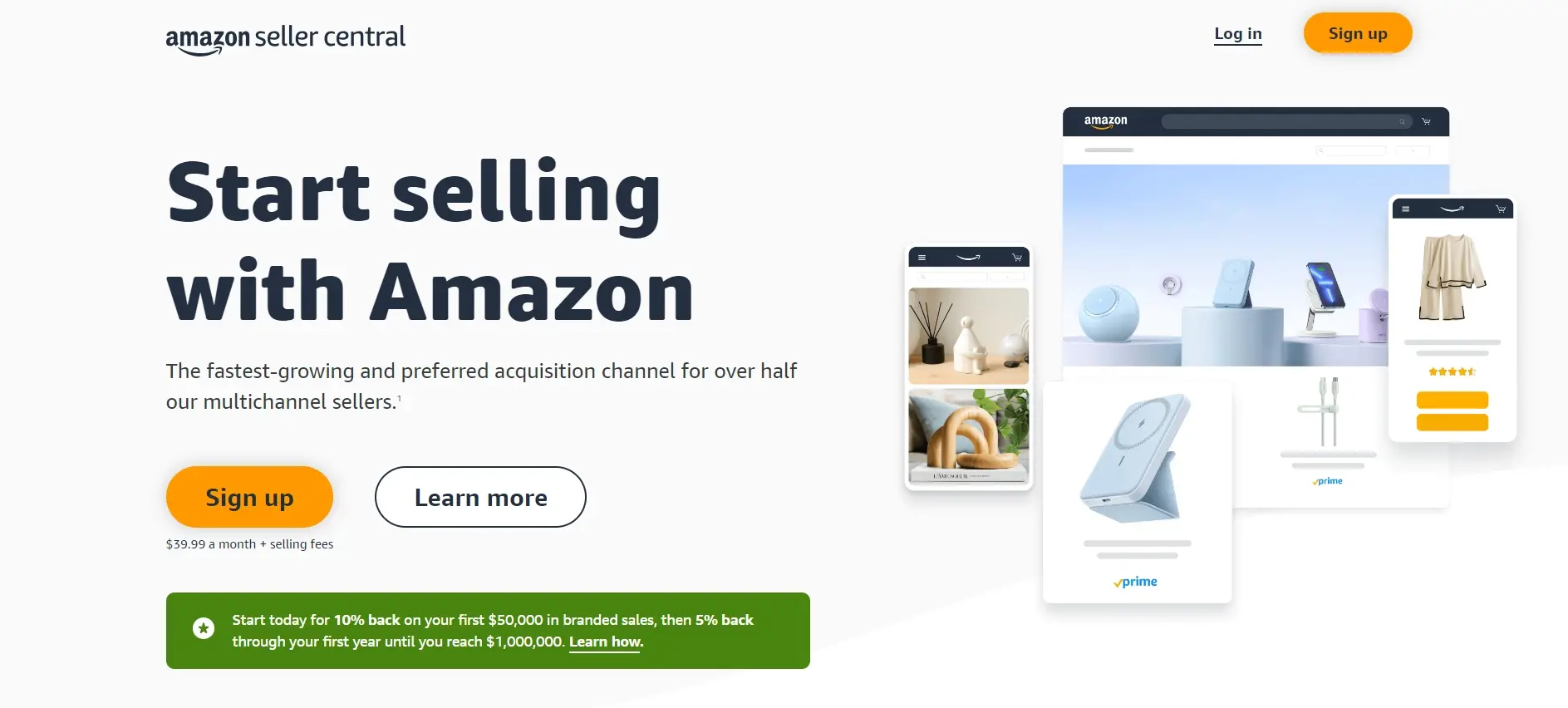
Amazon is an e-commerce company and it is one of the biggest online retailers in the world. With Amazon, there’s the opportunity to reach a global audience without spending money on overhead costs.
Amazon brand store is where you can showcase your brand and products. The store builder allows entrepreneurs to design a homepage where a brand can post its entire products and also use sponsored brand campaigns to attract more customers.
To access the Amazon Brand Store, business owners must register with the Amazon Brand Registry to list products and other content.
To set up a brand store, visit the Amazon Seller Central. Amazon also provides a guide on how to start an e-commerce business, providing steps to help beginners get started!
Shopify
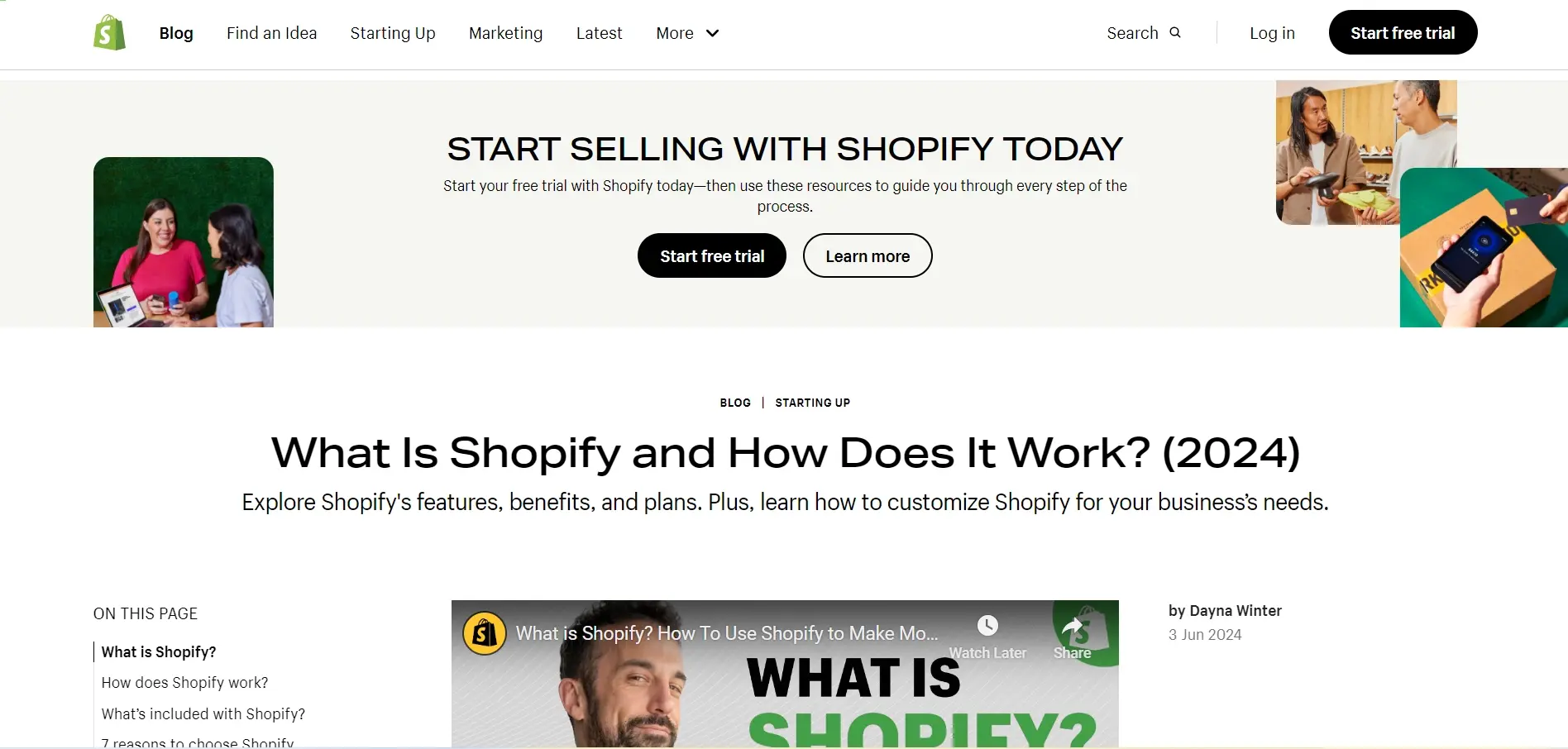
Shopify is an E-commerce platform that lets anyone manage and grow a business. The app allows entrepreneurs/business owners to build online stores.
Shopify offers a 3-day trial to build a website, you can use the free trial to explore, also, there's an official Shopify tutorial that can help you set up your store efficiently.
Content Management System
A content management system is a software application to create, modify, and manage digital content on a website. Using a CMS (content Management System) offers numerous benefits including;
User-Friendly: Many CMS platforms are easy to set up, especially for non-technical users.
Collaboration: allows users to develop, modify, and publish content.
SEO: This means the CMS platform has built-in tools for search engine optimization
Scalability: CMS platform can be used for small or large websites
Examples of CMS platforms to consider;
WordPress and WooCommerce:
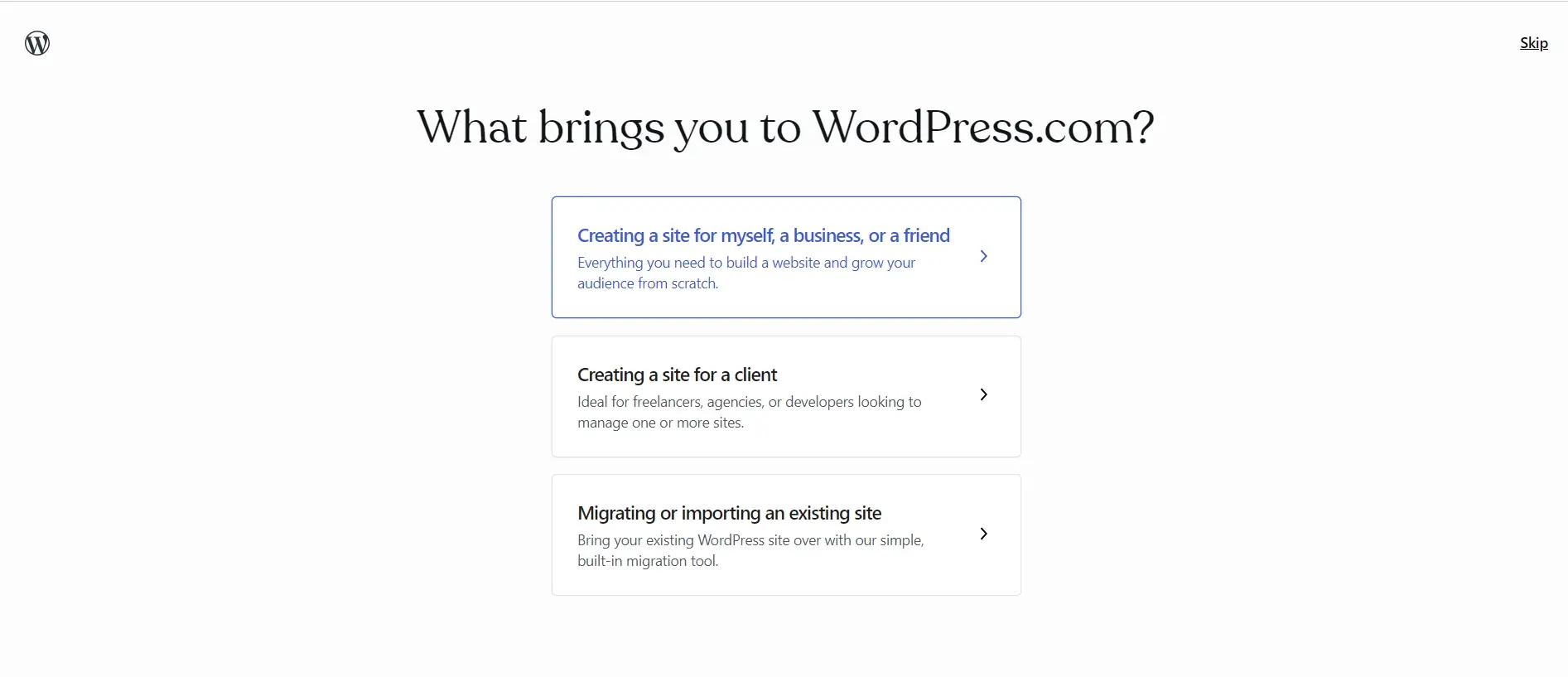
Creating a smart gadget store using WordPress is possible with plugins like WooCommerce.
Getting started with WordPress requires different steps like choosing the reason for wanting a WordPress website, choosing a new or adding an existing domain name, and choosing a plan before you’re directed to a web page like the image below.
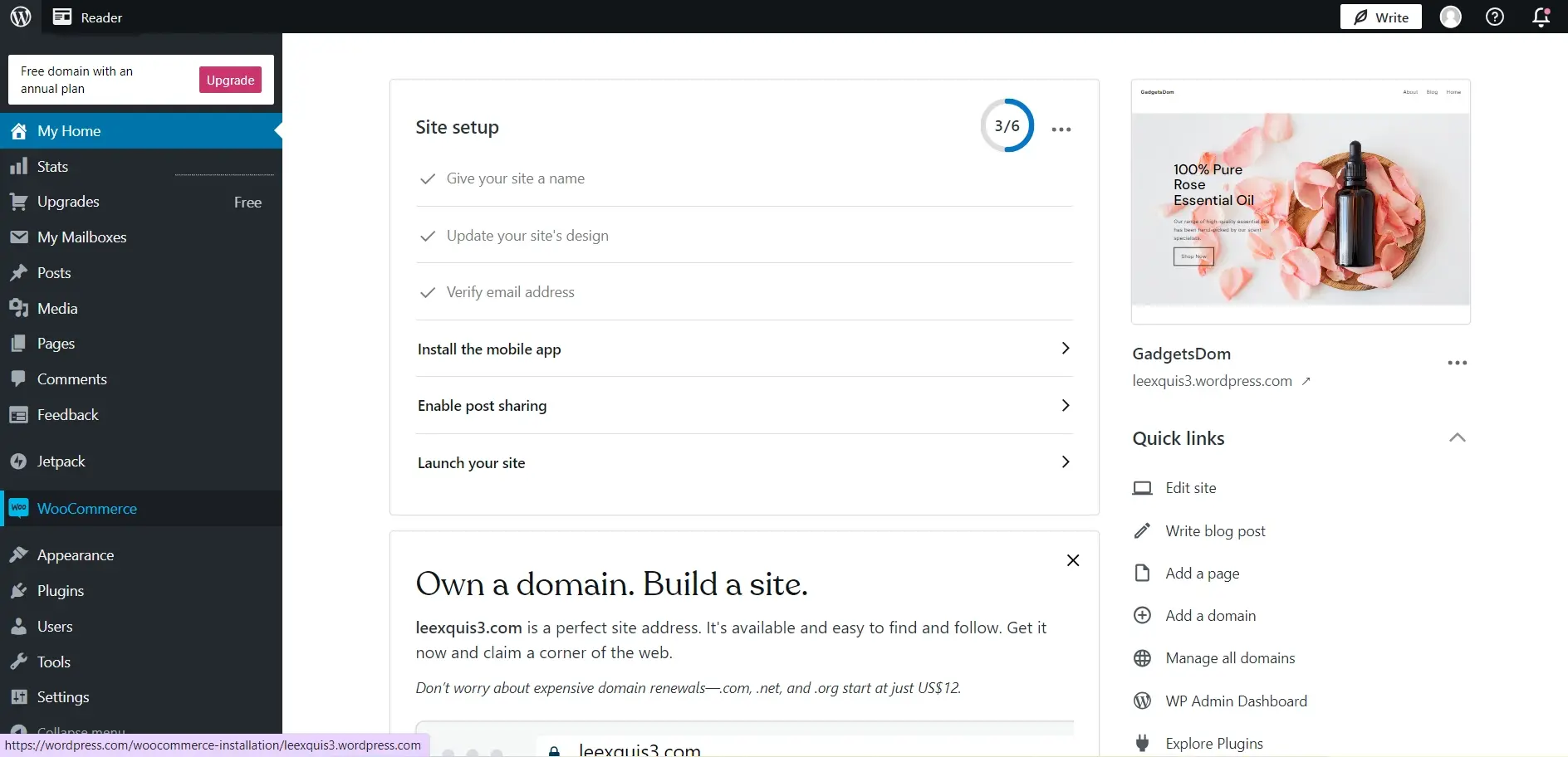
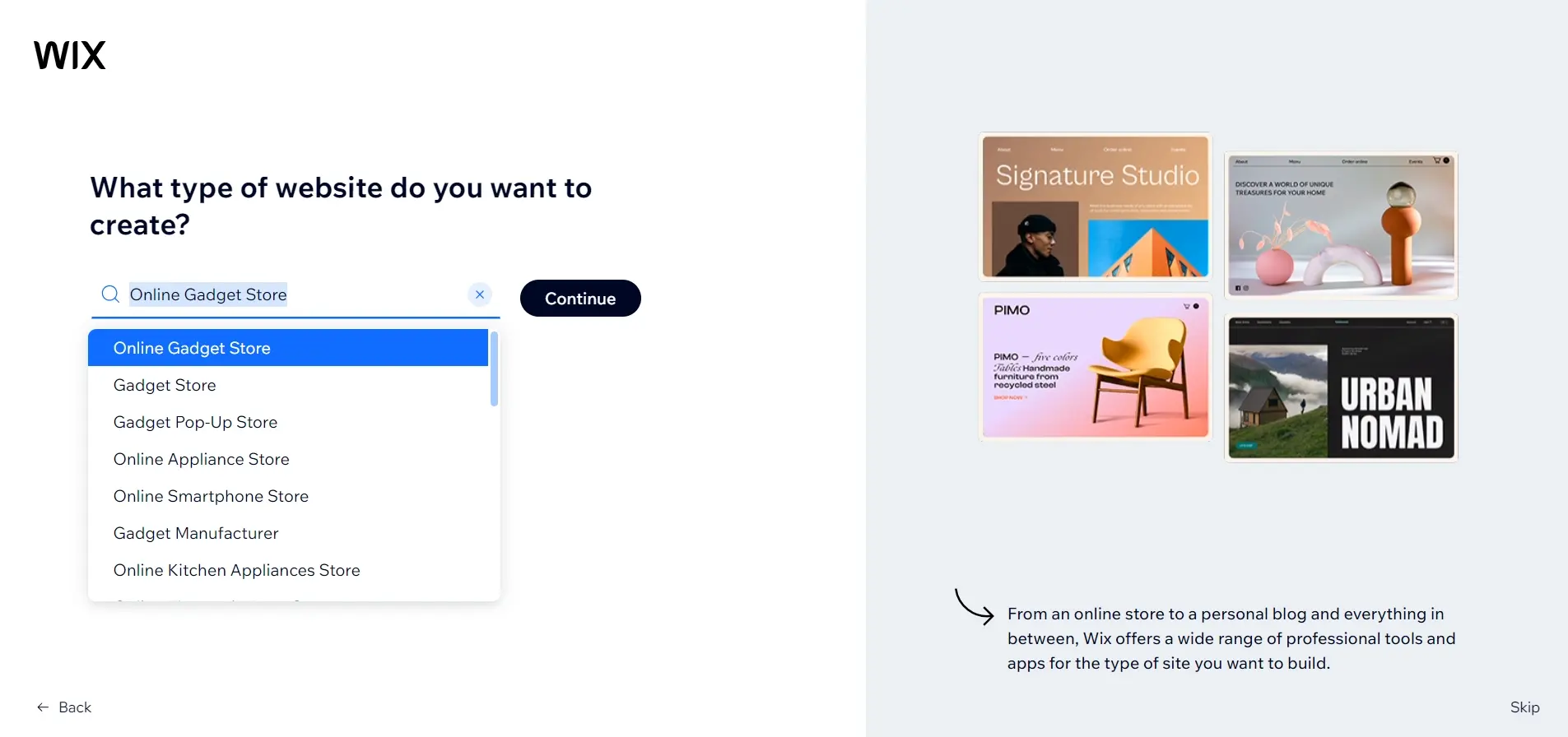
WIX allows users to create sites easily by dragging and dropping elements, and it also has customizable templates. Wix offers tools for designing, and managing websites, and online stores. There are e-commerce functionalities for product listings, inventory management, payment gateway, etc.
When you choose what type of website to create, you’ll be directed to a page to help you set up the store.
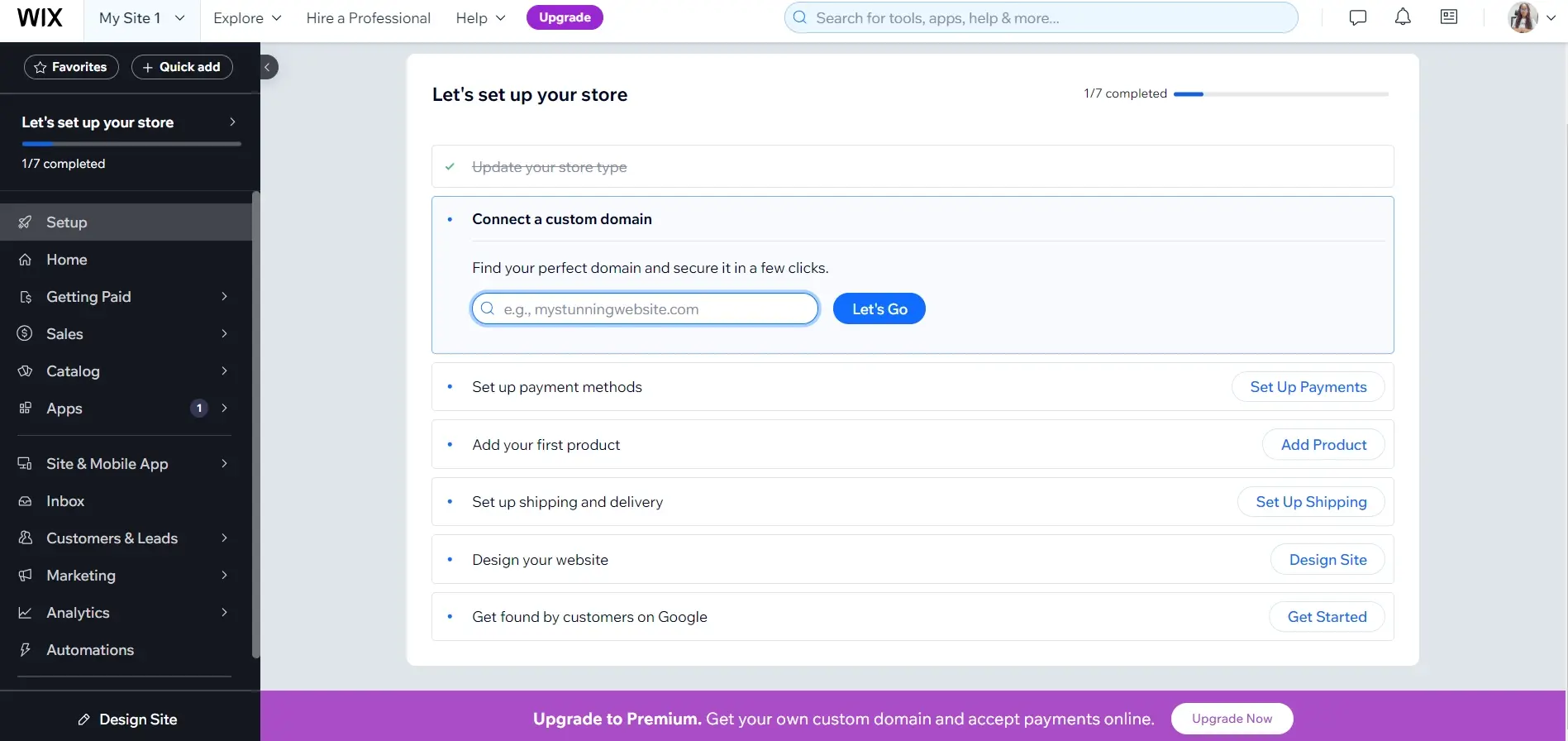
Custom Development
Developing a website from scratch requires skills like website design/structure, front-end development, and back-end development. If you don’t have the technical know-how, you would need to hire a web developer to handle creating a functional smart gadget store.
However, if you want to custom develop, these are the requirements for building a smart gadget store from scratch:
Domain and Hosting
Choose a domain name unique to your brand, register the domain name, and also select a hosting provider based on what the website needs.
Website Design
Create a sitemap to outline the structure of the website, create wireframes to visualize the layout of the website, and also create a mockup design using tools like Figma, Sketch, etc.
Front-End Development
Develop the website using HTML to structure its content, use CSS for styling, and JavaScript for interactivity. Depending on your store, you may use frameworks like React, Svelte, Angular, etc.
Back-End Development
Choose a server-side language such as JavaScript (Node.js), PHP, or Python. You may also consider using backend frameworks like Express (Node.js), Django (python), and Laravel (PHP). Additionally set up a database to manage and store data, and an API to enable interaction between the front-end and back-end of the website.
Shop Functionality
This functionality would include;
Product Display: This involves the displaying of products with necessary descriptions, search, filtering, sorting, and categories;
Shopping Cart: This would enable customers to add products to a cart; and be able to view, add, or remove items from the cart. It also includes a summary of the individual cost and the total cost of items.
Checkout Process: This includes information about shipping, billing and contact details, shipping options and costs, payment processing, and user accounts so users can view their history, and create a wishlist.
Product management: This is used for managing product inventory which involves creating, updating products on display, and so on.
CMS integration: This is used to update products without the need to make changes to the course code.
Analytics and Reporting: This displays and provides analytics reporting for sales and performance revenue.
Security and Compliance: This involves ensuring that transactions are secure and the business is adhering to privacy policies.
Marketing and Advertisement:
This involves implementing marketing strategies like SEO (e.g. keyword search), content marketing (e.g. video content showcasing products), email marketing, social media marketing, affiliate marketing through collaboration, referral marketing, and advertisement strategies like Google Ads, Facebook Ads and Instagram Ads to attract customers and drive sales.
This method may cost you more than using an e-commerce site or a content management system (CMS) platform to build a website however the many advantages include the following;
- Customization
- Unique user interface
- Scalability
- Specific performance optimization
- Ownership and control
- Tailored security methods.
Summary
Building a smart gadget store requires planning like any business. It’s important to create a layout to determine the functionalities you want for your site. This would help you determine whether to build a custom site, use e-commerce, or a CMS platform.
Frequently Asked Questions
How Can Small Businesses Benefit from E-Business?
Small businesses can benefit from E-Business through global reach, cost efficiency, and improved customer engagement. Digital platforms provide access to a broader customer base, reduce operational costs, and enable direct communication with customers.
What are some low risk business models for starting an online business?
Both dropshipping and affiliate marketing are considered low risk business models for starting an online business because they require minimal upfront investment and do not involve managing physical inventory.
How can starting an affiliate marketing business model benefit my online business?
Starting an affiliate marketing business model can benefit your online business by providing low-risk entry, as it requires minimal upfront investment and you don't need to manage inventory or fulfill orders, allowing you to focus on marketing and growing your brand.

Jessica Agorye is a developer based in Lagos, Nigeria. A witty creative with a love for life, she is dedicated to sharing insights and inspiring others through her writing. With over 5 years of writing experience, she believes that content is king.
View all posts by Jessica Agorye




















